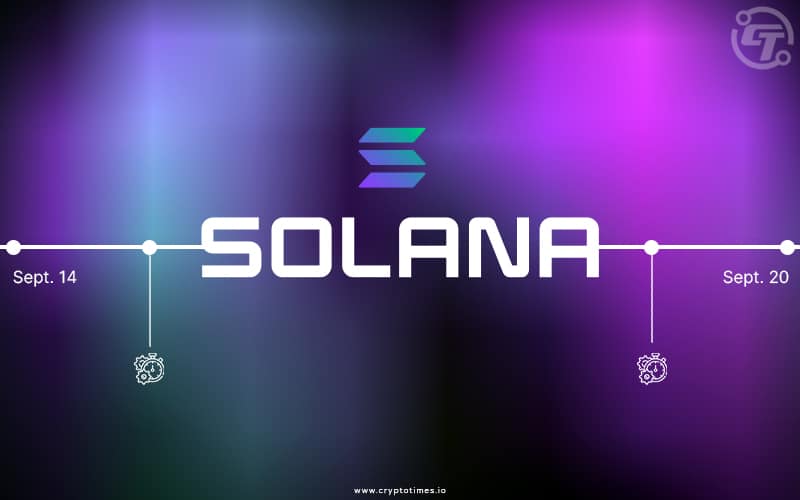In Brief:
- Solana released a preliminary report on the network disruption that happened last week.
- According to the Solana Foundation, a flood of transactions driven by bots was “in effect, a denial of service attack.”
Solana encountered a major roadblock last week when its blockchain network remained unavailable for more than 17 hours starting on September 14, after weeks of increasing momentum during which the price of its coin more than fivefold in value. The Solana Foundation released an initial autopsy of the incident today, shedding additional light on the core reason.
The root cause of the network stall was a denial of service attack. No funds were lost in the attack and the network went live again in 24 hours.
Raydium, Solana-based decentralised finance (DeFi) system, launched an initial decentralised exchange (DEX) offering, or IDO.
An IDO, or initial coin offering, is a type of token launch that takes place on a DEX rather than a centralised exchange (ICO). Grape Protocol, a frequently used Solana toolkit for DeFi developers, was the IDO in this case. Bots were evidently attempting to elbow their way to the top of the token offering by flooding the network with transactions.
The majority of the information in the initial overview report confirms what was tweeted last week, either by Solana’s official Twitter accounts or by Solana Labs CEO Anatoly Yakavenko’s personal account. The network was essentially swamped by a rush of incoming transactions, which the Foundation estimated to be up to 400,000 per second.
The transactions overloaded the Solana network’s distributed nodes and caused some to crash due to the high memory use. When the network couldn’t agree on the present state of the blockchain, it stopped producing blocks. Last week, Solana ascribed the disruption to “resource weariness.”
The network’s validators eventually decided to update and restart the network, resulting in a hard fork from the most recent confirmed block. According to Solana’s report, it took 14 hours to organise the restart effort across the needed 80% of validators, update the nodes, and get the network back up and running.
With community assistance, the Solana Foundation hopes to issue a more detailed technical postmortem in the coming weeks.






